#eleanor lancaster
Explore tagged Tumblr posts
Note
I'm curious about your other four favorite historical couples?
My current top would be this:
Edward IV and Elizabeth Woodville
As I mentioned below, in the previous post and in a few others, they were the first historical couple I discovered that managed to keep my interest for so long. A more detailed explanation can be found here. Even now, years later, I continue to explore and study them, both individually and as a couple.
A meme daddy and my favorite Queen, haha.
Richard Plantagenet and Cecily Neville
I can honestly say that this couple surprised me in many ways. When my fascination with the Wars of the Roses had not yet taken deep roots, all I could say about them was that they were the parents of Edward IV, lol. I liked Richard from the first moment I read about him, he seemed like a magnetic presence - with all his arrogance and bravado: in literature or art, I like arrogant characters, especially if they are well represented. Which is in stark contrast to my opinion of arrogant people, so if I had really met Richard Plantagenet and he had waved that ducal nose at me I would probably punch him. Hard. I really disliked Cecily at first - she seemed to me like the kind of mother who doesn't let the protagonists of the fairy tale experience their love, lololol. What happened along the way? I tried to understand her, and, oh my God, what I found during my documentation made me want to know even more. Not only was Cecily a remarkable, intelligent, brave, and proud woman, but her will to fight and endure so much loss throughout her life fascinated me. Not to mention how well she suited Richard. This couple touched my heart so deeply that I decided to write about them - little is known about Cecily's childhood, or perhaps about childhoods in the Middle Ages in general (with a few exceptions), but the fact that they grew up together at Raby, that they had the chance to get to know each other better before they got married, gave me the chance to try to fill in those gaps, to try to lay the foundations for a relationship that lasted 37 years.
Because yes, Cecily is and always will be the perfect partner for Richard!
John, Duke of Bedford and Anne of Burgundy
I haven't had time to research this couple in detail yet, but everything I've learned so far has been enough to put them on my list of favorite couples. I know very little about Anne, but Bedford is my favorite. The man gave his soul and life - literally - to maintain the entire English Kingdom in France for his nephew. When I say Regent of France, I say Bedford, because it seems to me that he's the only one who's truly proven he deserves the title - not to mention how often he had to clean up the mess at home, pfff. Big brother having big brother problems. Despite the fact that he's at the heart of political and military conflicts at this point, I could never imagine him being the heart of the party, you know what I'm saying? Tell me Bedford did something hilariously stupid without making you cringe. That's right, you can't. His whole being cries out: "Responsibility, Responsibility, Responsibility!" I have always perceived him as having a serious figure - sober, reserved, logical - which makes him seem quite solitary. I am not saying that he cannot have fun, but his type of fun always has a well-defined purpose: my man organized the reenactment of the assassination of his father-in-law and presented it to his brother-in-law, the Duke of Burgundy. Philip probably could not swallow his pigeon at supper. What particularly caught my attention was the comment of this contemporary:
"My Lord the Regent loves Madame Regent so well that he always brings her with him to Paris and everywhere else."
Of course, as the sister of the Duke of Burgundy, her mere presence declared her brother's support for the English. It may have been a political move - but I believe it was always more than that. I believe that in Anne he found the support and courage that he needed when the political relations with her brother seemed to be falling apart. Despite not giving him any heirs, her presence was vital in the long war between England and France, and she proved more than capable of making Philip reconsider Burgundy's connection to the English. He remarried so soon after losing her, but I'm sure Bedford mourned her death more than we can imagine. Even so, Bedford always proved to be a practical man - as always, his feelings could wait; he had put his own suffering aside for a greater cause. His nephew's throne.
Remember - "Responsibility, Responsibility, Responsibility!"
Henry VII and Elizabeth of York
I don't think I can say more than I have already said. I know the most important details about them, although, as I have argued before, I prefer to think of Elizabeth as a daddy's Princess, even if being the wife and Queen of a King is a rather tempting prospect. Their marriage ultimately succeeded in ending the civil war. To a point, you could say that Henry and Elizabeth are polar opposites. Hot and cold. This is because Elizabeth had a lot of affection to offer - growing up in a loving family, living in a protective environment, surrounded by siblings, was exactly what Henry, who had lived and grown up in exile, with an uncertain future, needed at that time. It is for this reason that I choose not to consider the scenarios in which she and Margaret Beaufort were in constant conflict. There may have been some friction between them, perhaps they sometimes vied for the King's affection, but I doubt that the matter degenerated to the point where the two women came to detest each other. Moreover, there is ample evidence to show that they had a fairly smooth collaboration. No one can deny that his intentions regarding a union with Elizabeth were purely political - at least at first. I do not want to say that Elizabeth was the one who taught Henry to love, but I want to emphasize that Elizabeth used both her life experience up to that point, and the model of her parents, to make the marriage with Henry work. Henry, like Edward IV, had been declared King of England by right of conquest, so she understood what was expected of her - without forgetting her true value, she was determined to become what her husband needed her to become.
This will be quite surprising, but…
Humphrey, Duke of Gloucester and Eleanor Cobham
And I say this because the interest in this couple only began when I initiated the process of writing the book Proud Cis. Suffering a defeat on the Continent, Gloucester chooses to flee back to England, and instead of his so-called wife, he takes his mistress with him; later he initiates the annulment of his marriage to Jacqueline of Hainault, so that he can marry, instead, Eleanor Cobham - a rather controversial situation, as only Humphrey can do, pfff. Unlike her husband - and this is a moment of honesty - I will say that the only thing I knew about Eleanor was that she had been accused of witchcraft against Henry VI, but when I introduced her into my story, I had to go deeper to discover the real Eleanor, who was beyond all the prejudices and accusations that had been made against her over time. I think that, against all expectations, the two of them formed a harmonious couple - Humphrey seems to have had a genuine affection for her; I have no interest in presenting Eleanor as a victim, she was clearly an ambitious woman, so I am sure that part of her mind rejoiced when, in 1435, Gloucester sought to secure her future in the event of his death, so that she could enjoy absolutely all his properties for life. To be clear: she was ambitious, but not treacherous, so there is no need to imagine that her affection and respect for Humphrey was only a delusion. Or that she really wanted Henry VI dead. I think they both had interests in common and her ambition matched his.
Side note: Maybe it's just my perception, but what I like most about Humphrey is that, despite his apparent talent for making enemies, he seems to have been the fun uncle. Unlike Bedford, he tries to make Henry experiment with all sorts of things, hahahah.
I remember reading at one point that Eleanor might have been illiterate - allow me to disagree. She may have been of a much lower rank than he was, but I doubt that Humphrey, with such a vast library, surrounded by poets and humanists, with his interest in learning (these people transformed La Pleausanse into a center of art and intellectual activity), would have taken an ignorant woman as a wife. She may not have been on Humphrey's level, but I tend to think that she was more than just a pretty face. And the idea that he taught her to read is out of the question, lololol.
#the wars of the roses#15th century#history#historical#medieval#historical couples#medieval england#middle ages#british history#edward iv#elizabeth woodville#richard plantagenet#duke of york#cecily neville#john duke of bedford#anne of burgundy#henry vii#elizabeth of york#humphrey duke of gloucester#eleanor cobham#house of york#house of lancaster#plantagenets#royals
20 notes
·
View notes
Text
Liste de lecture sur les Plantagenêts.
Chose promise, chose due. Vous trouverez l'ensemble des docs historiques en français et en anglais portant sur la dynastie des Plantagenêts.
Pour information, des listes de romans en français, en anglais et des docs qui se concentrent sur les rois et les reines Plantagenêts devraient venir fin mai.
La liste est exhaustive.
Français :
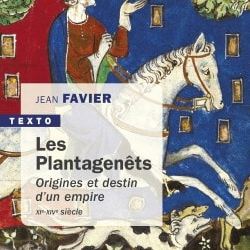
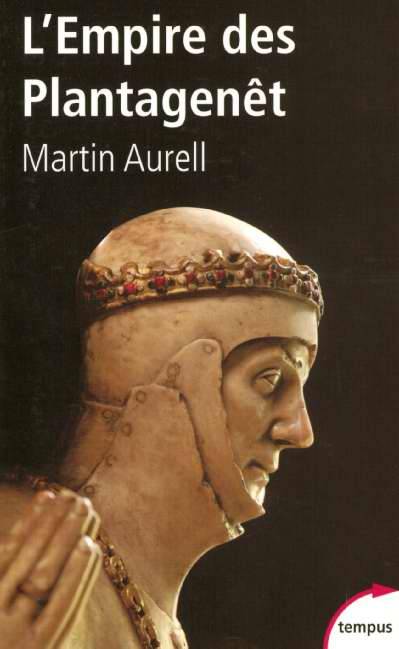
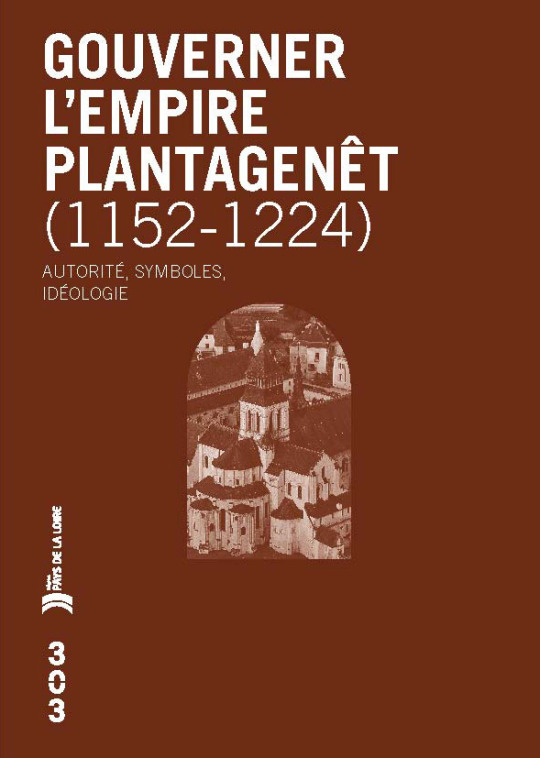
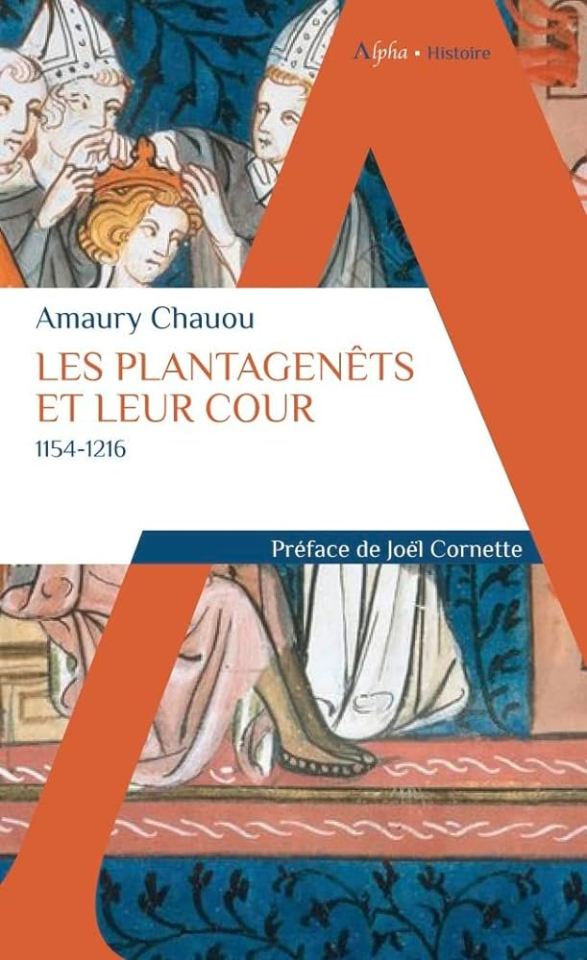
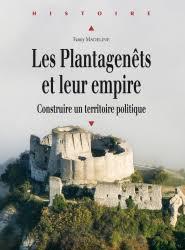
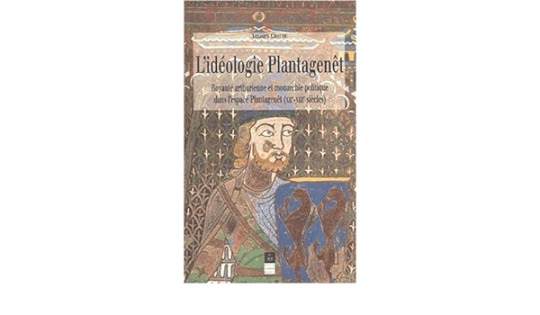
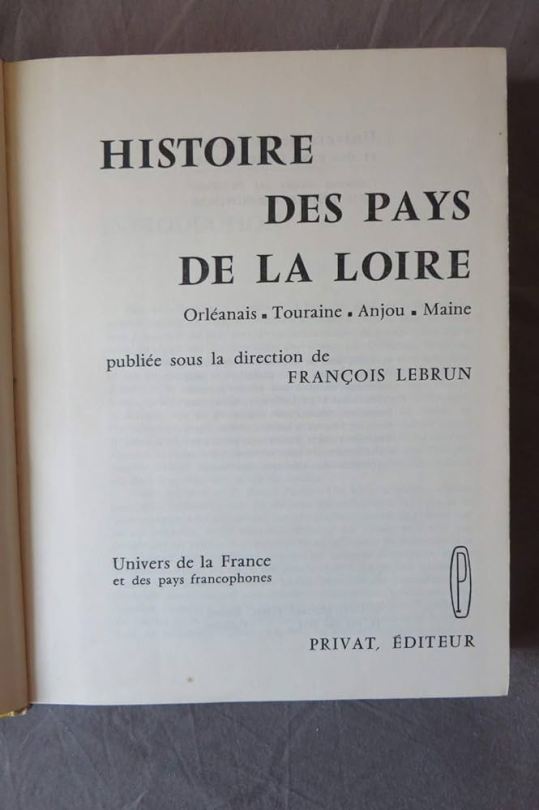
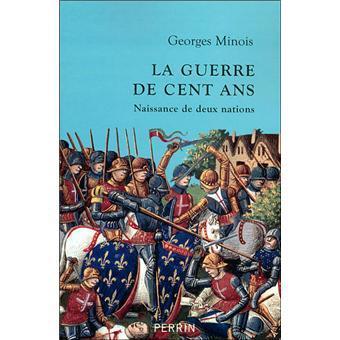
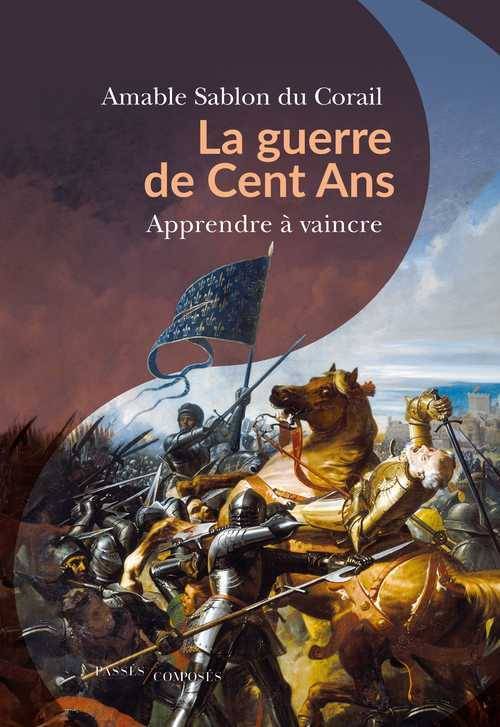
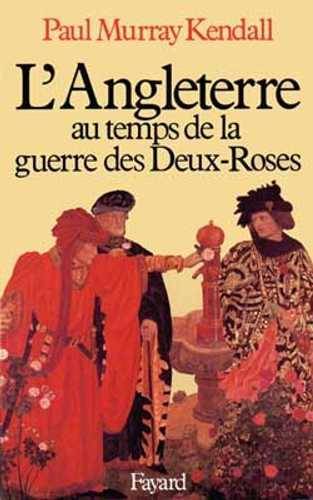
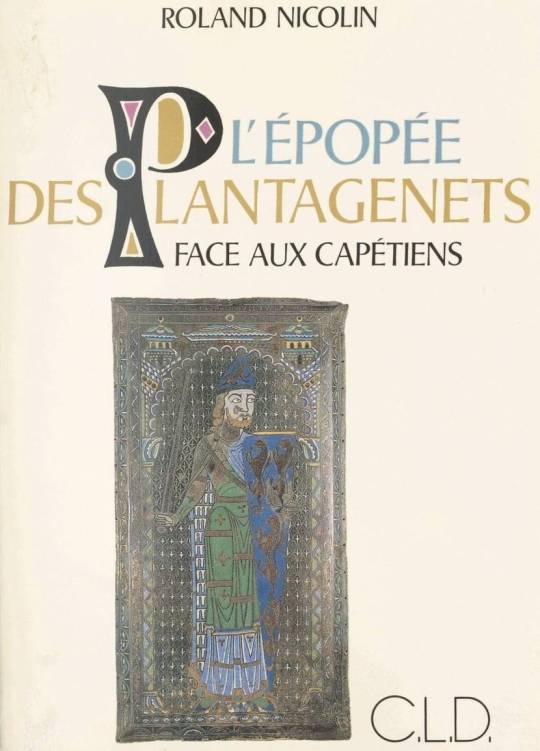
Anglais :
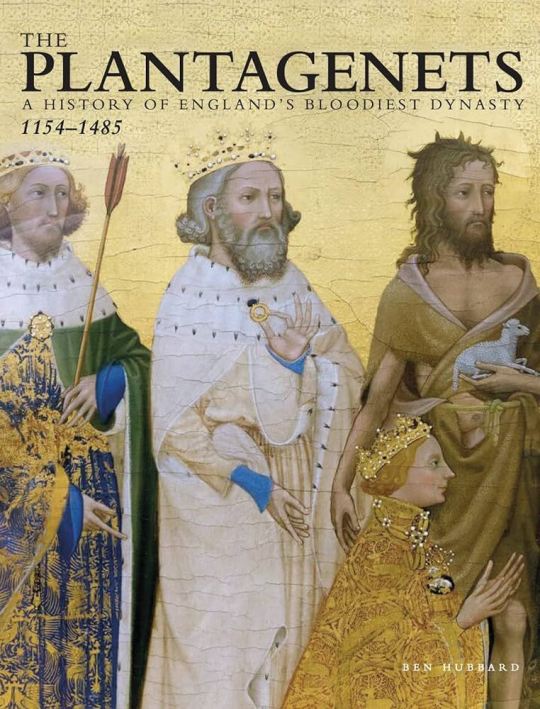
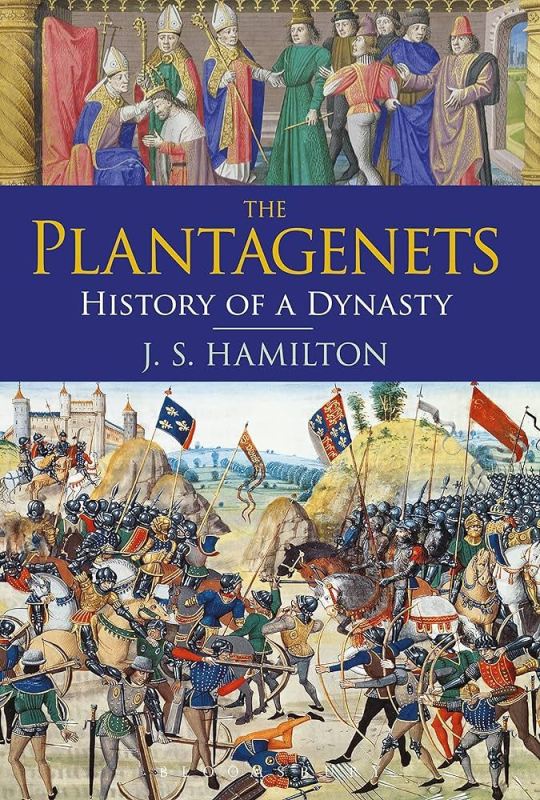
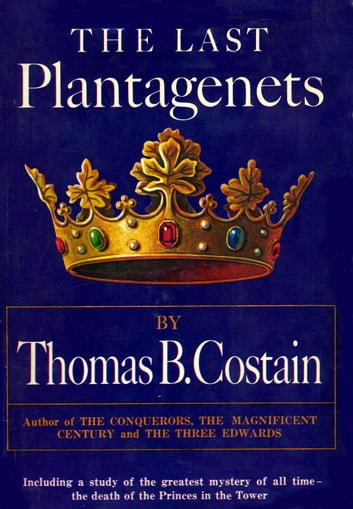
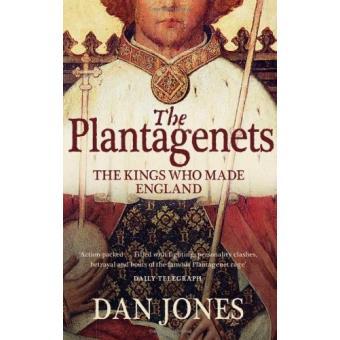
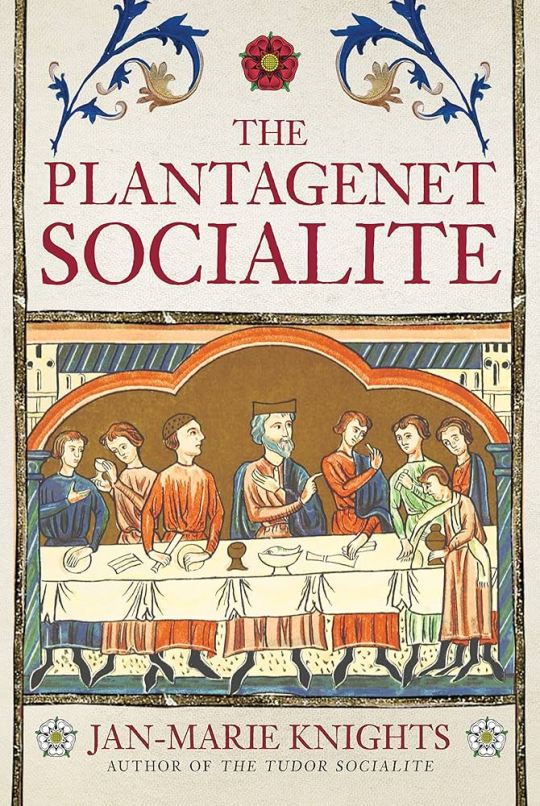

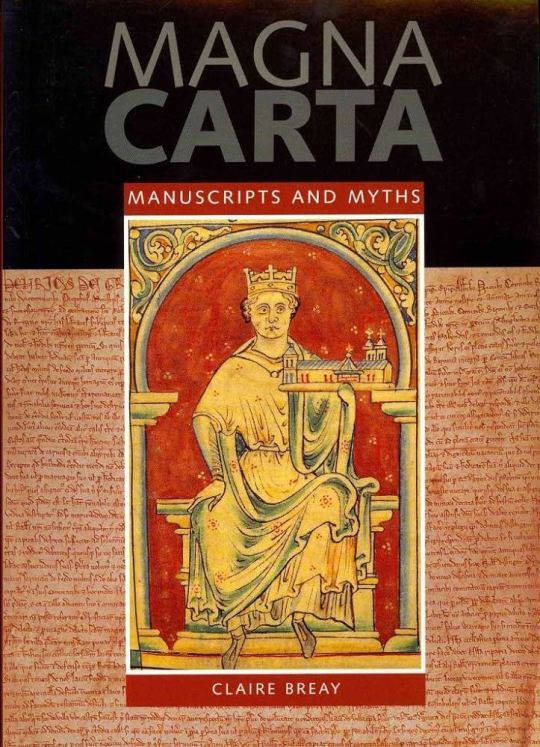
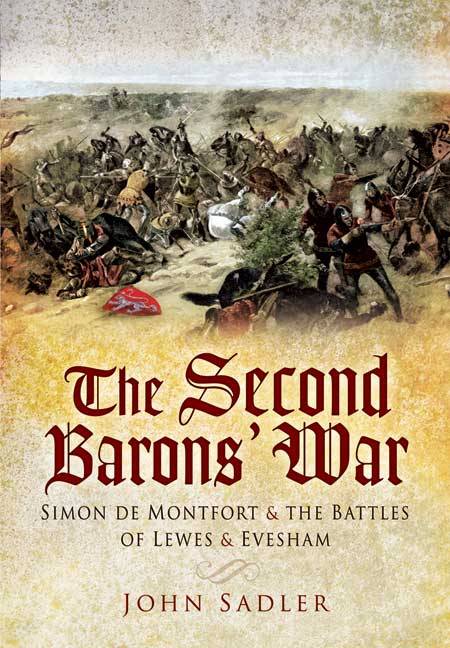
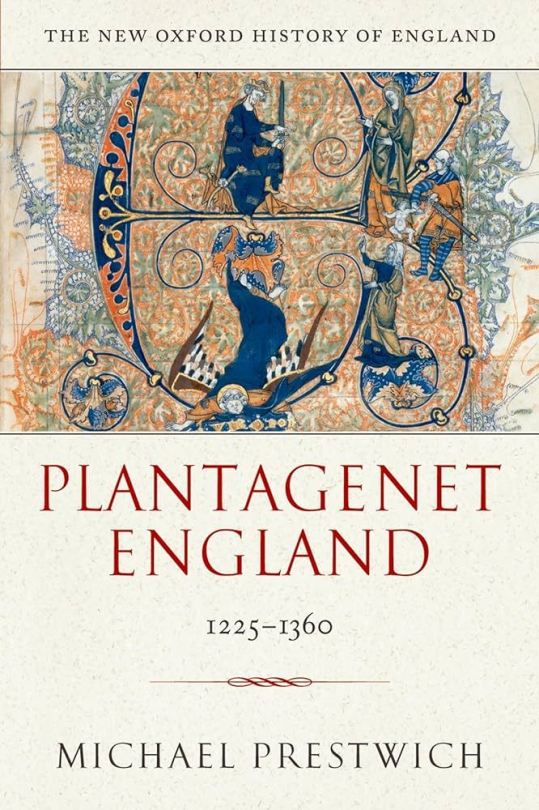
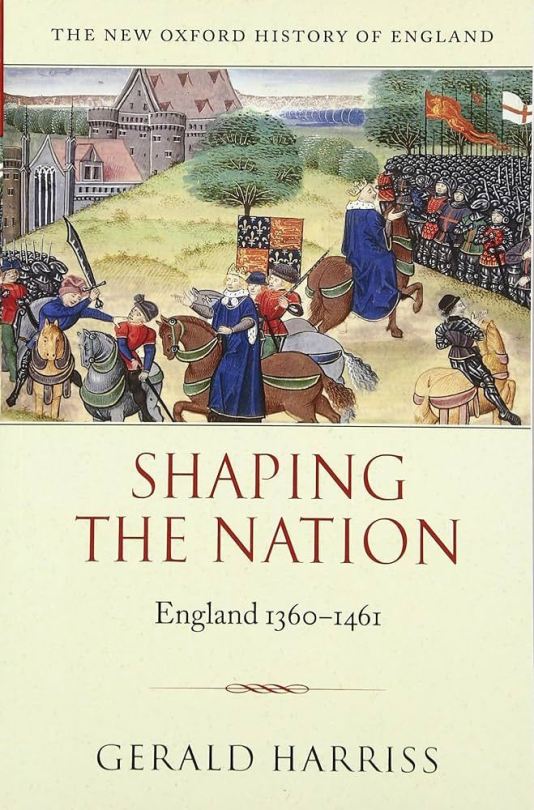
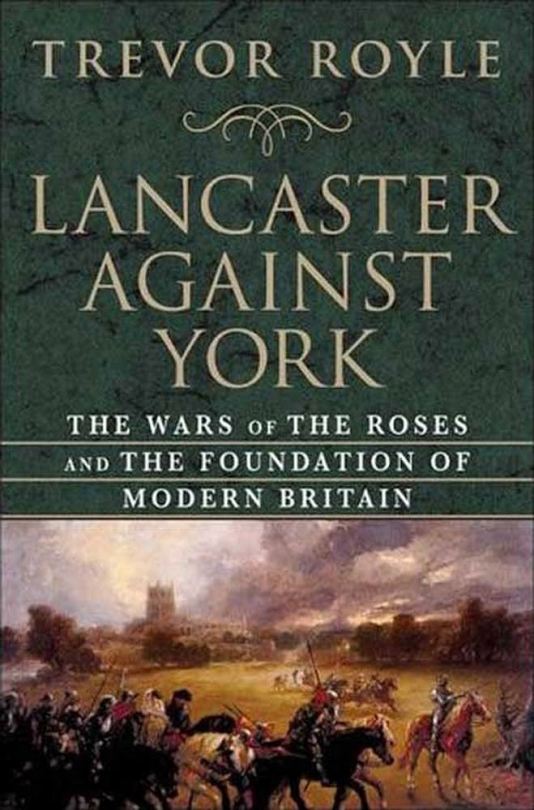
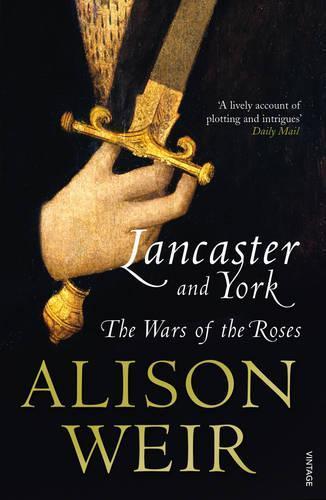
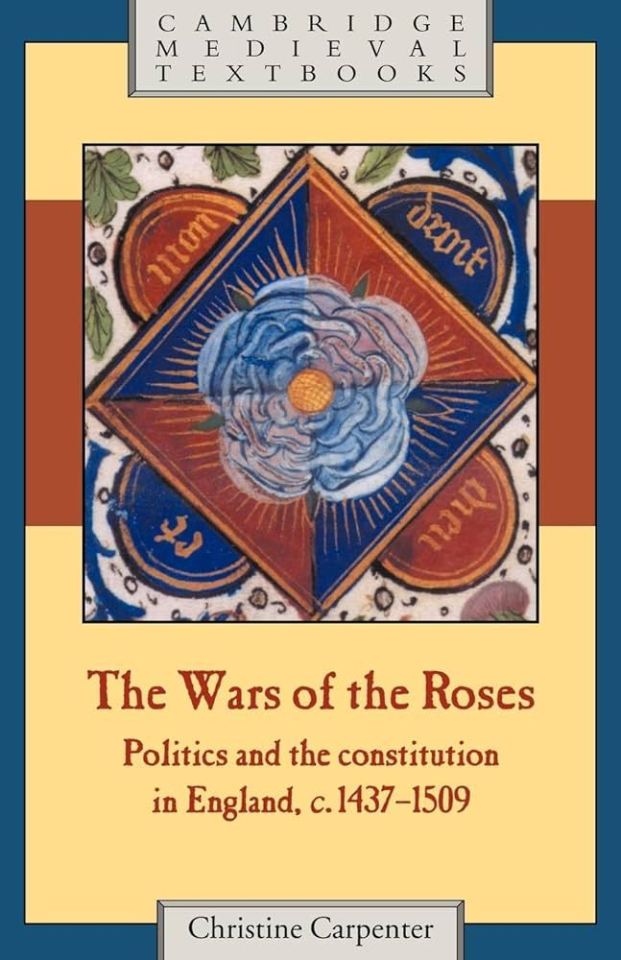
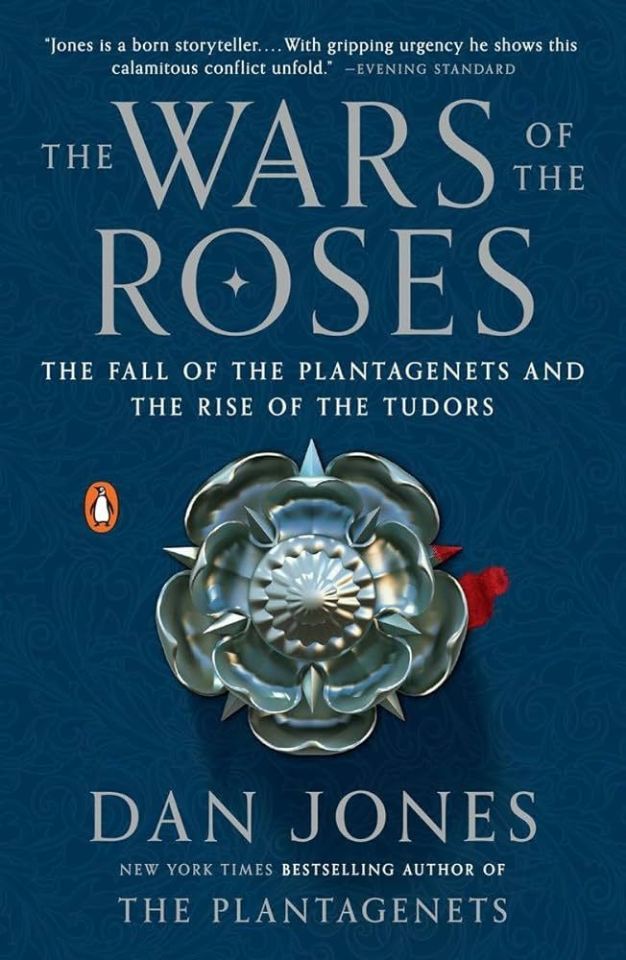
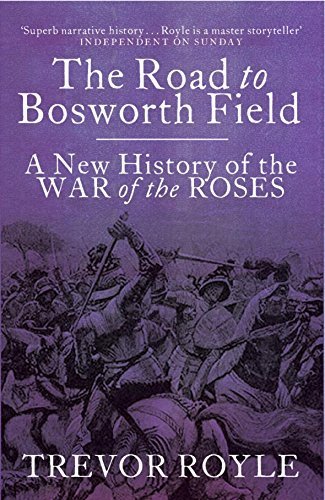
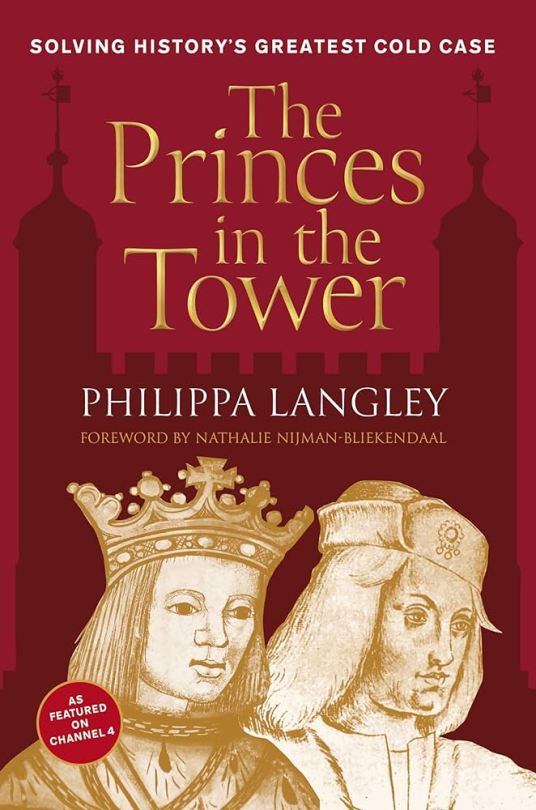

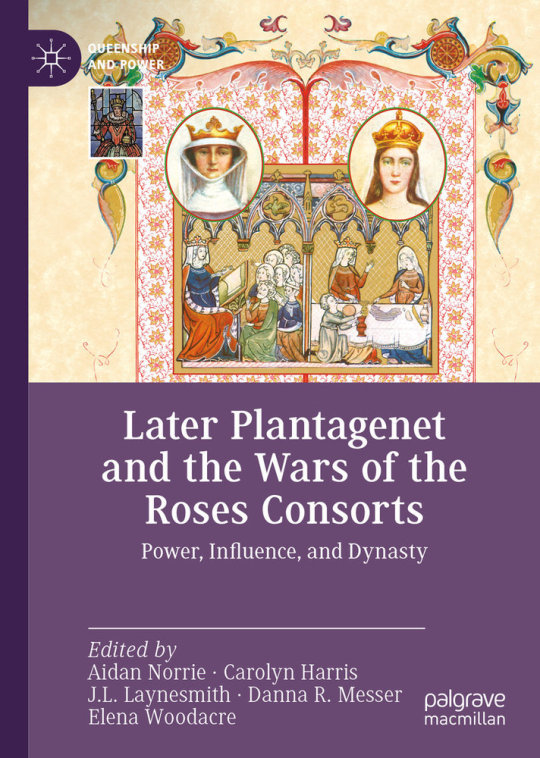
#booklr#books#plantagenet#plantagenets#eleanor of aquitaine#henry ii#henry iii#edward i#edward ii#edward iii#york#lancaster#richard the lionheart#richard iii#richard ii#john king#edward iv#history medieval#medieval history#moyen âge
17 notes
·
View notes
Text




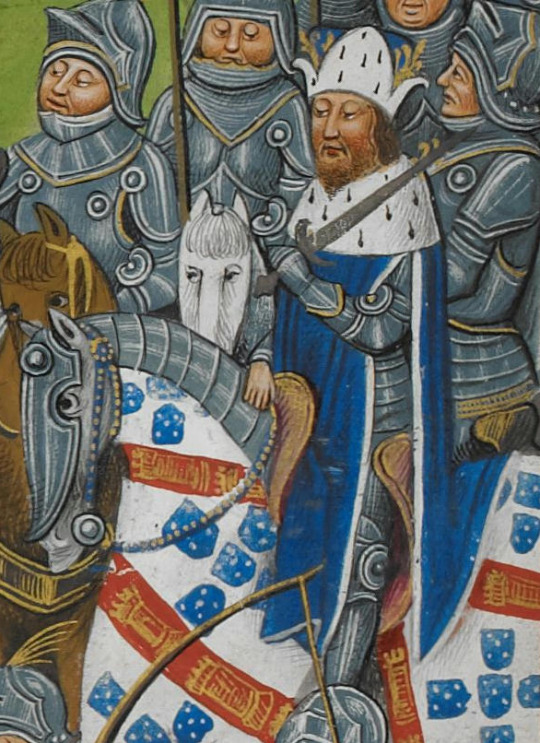

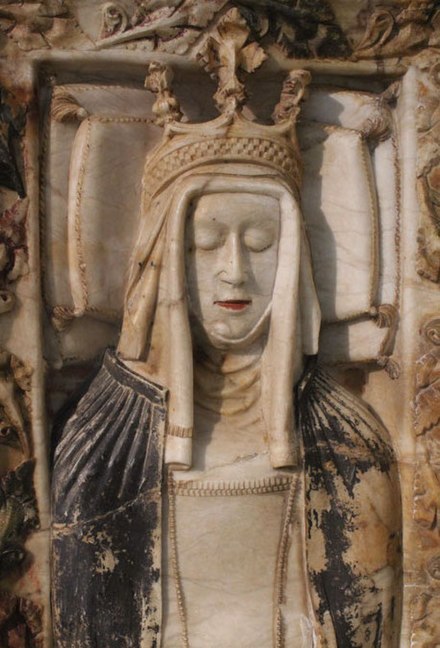


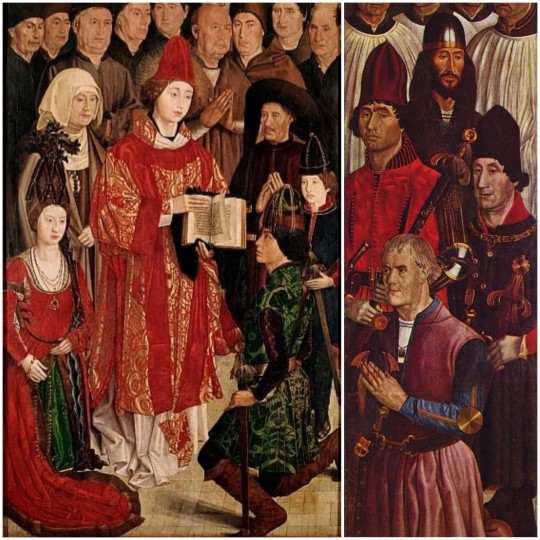
The Bastard Kings and their families
This is series of posts are complementary to this historical parallels post from the JON SNOW FORTNIGHT EVENT, and it's purpouse to discover the lives of medieval bastard kings, and the following posts are meant to collect portraits of those kings and their close relatives.
In many cases it's difficult to find contemporary art of their period, so some of the portrayals are subsequent.
1) John I of Portugal (1357 – 1433), son of Peter I of Portugal and Teresa Lourenço; with his wife, Philippa of Lancaster (1360 – 1415), daughter of John of Gaunt and his wife Blanche of Lancaster
2) His father, Peter I of Portugal (1320 – 1367), son of Afonso IV of Portugal and his wife Beatrice of Castile
3) His sister, Beatrice of Portugal (c. 1354–1381), daugther of Peter I of Portugal and his wife Inês de Castro
4) His brother, John of Portugal (1352 – c. 1396), son of Peter I of Portugal and his wife Inês de Castro
5) His brother, Ferdinand I of Portugal (1345 – 1383), son of Peter I of Portugal and his wife Constanza Manuel de Villena
6) His sister in law, Leonor Teles de Meneses (c. 1350 – c. 1405), daughter of Martim Afonso Telo de Meneses and his wife Aldonça Eanes de Vasconcelos
7) His niece, Beatrice of Portugal (1373 –c. 1420), daughter of Ferdinand I of Portugal and his wife Leonor Teles de Meneses
8) His niece, Isabella of Portugal (1364–1395), daughter of Ferdinand I of Portugal and an unknown woman
9) His daughter with Philippa of Lancaster, Isabella of Portugal (1397 – 1471)
10) Left:
I. Eleanor of Aragon (1402 – 1445), daughter of Ferdinand I of Aragon and his wife Leonor de Albuquerque; and wife of Edward I of Portugal
II. Isabella of Coimbra (1432 – 1455), daughter of Peter of Portugal and Isabella of Urgell; wife of Afonso V of Portugal
III. Edward I of Portugal (1391 – 1438), son of John I of Portugal and his wife Philippa of Lancaster
IV. John II of Portugal (1455 – 1495), son of Afonso V of Portugal and his wife Isabella of Coimbra
V. Afonso V of Portugal 15 (1432 – 1481), son of Edward I of Portugal and his wife Eleanor of Aragon
Right:
I. Ferdinand of Portugal (1402 – 1443), son of John I of Portugal and his wife Philippa of Lancaster
II. John of Portugal (January 1400 – 1442) son of John I of Portugal and his wife Philippa of Lancaster
III. Peter of Portugal (1392 – 1449), son of John I of Portugal and his wife Philippa of Lancaster
IV. Henry of Portugal (1394 – 1460), son of John I of Portugal and his wife Philippa of Lancaster
Note: In the last picture, the Panel of the Prince or the Infante and the Panel of the Knights from Nuno Gonçalves' St. Vincent Panels, the identity of some of the members of the Royal family it's still discussed, like the man identified as Edward I in the Panel of the Prince is his brother Henry, but we're considering the interpretation of the people of the panel being Afonso V with his parents, wife and heir, and the ones of the Panel of the Knights are Edward I's brothers, although by the time the panels were painted most of them have already died.
#jonsnowfortnightevent2023#asoiaf#a song of ice and fire#day 10#echoes of the past#historical parallels#medieval bastard kings#bastard kings and their families#john i of portugal#philippa of lancaster#peter i of portugal#ferdinand i of portugal#beatrice of portugal#john of portugal#isabella of portugal#eleanor of aragon#edward i of portugal#john ii of portugal#afonso v of portugal#leonor teles de meneses#isabella of coimbra#peter of coimbra#canonjonsnow
13 notes
·
View notes
Text
No crunking, but lots of haterating and hollerating and even some situations:
BRUTE FORCE (1947): Aptly named prison drama about a group of convicts (including Burt Lancaster, Charles Bickford, and radio actor Howard Duff) in a battle of wills and wits with the sadistic guard captain Munsey (Hume Cronyn). Forcefully directed by Jules Dasssin and certainly vivid, but the few moments of levity the Richard Brooks screenplay provides — such as a droll flashback sequence where former conman Spencer (John Hoyt, who later played Dr. Phillip Boyce in the original STAR TREK pilot) affectionately recalls the slick dame (Anita Colby) who once robbed him with his own gun — serve mostly to demonstrate that there's not enough light moments, even for such a determinedly grim and downbeat story. Worse, since the main action takes place entirely within the prison, women (including Ella Raines, Ann Blyth, and future TV Batgirl Yvonne De Carlo as well as Anita Colby) appear only in brief flashbacks. The film's main attraction is its superb acting — and even Lancaster's brooding sex appeal is somewhat overshadowed by Hume Cronyn's towering performance as the magnificently detestable Munsey. CONTAINS LESBIANS? Nope. VERDICT: Compelling in fits and starts, and Cronyn's Munsey is one of the screen's great villains, but it's so oppressive that your attention may start to wander, especially if neither Lancaster nor Cronin is currently onscreen.
HOTEL COCAINE Season 1 (2024): Colorful but sloppy Chris Brancato crime drama, based (apparently very loosely) on the life of a real person, Cuban exile and CIA asset Roman Compte (played, weakly, by Danny Pino), who, as the general manager of Miami's Mutiny Hotel, presided over the heyday of coke-fueled late '70s South Florida hedonism. Brancato uses this as a backdrop for a disappointingly ordinary gangster story, giving Compte a fictional older brother, Nestor Cabal (Yul Vázquez), indistinguishable from Brancato's previous fictionalization of Cuban cop/gangster José Battle Sr. in GODFATHER OF HARLEM (where he was also played by Vázquez), and pitting the brothers against a renegade DEA agent (Michael Chiklis) and an invading Columbian cartel led by Gilberto Henao (Juan Pablo Raba). Despite the title, the Mutiny setting is surprisingly under-utilized; the main plot is cliché-ridden and often listless; and the action is broken up by periodic fits of weird comic relief involving nervous acid-freak hotel owner Burton Greenberg (Mark Feuerstein), including bizarre appearances by Hunter S. Thompson (John Ventimiglia) and Rick James (Larry Powell) in the first two episodes. Pino is barely adequate in the lead, and it sometimes seems like Brancato foolishly expects viewers to find Roman sympathetic, which he really never is, even compared to his antagonists. The only real reasons to bother with the show are its Latina characters, including Roman's spunky teenage daughter Valeria (Corina Bradley); his sympathetic girlfriend Marisol (Tania Watson); and in particular Gilberto's sexy and sadistic Mexican enforcer/girlfriend Yolanda (Mayra Hermosillo). Alas, Laura Gordon is awful as Roman's loyal right-hand woman Janice, while Michael Chiklis, who had made such a strong impression as the antiheroic Vic Mackey on THE SHIELD, is just laughable as DEA agent Zulio. CONTAINS LESBIANS: Not in any meaningful way. VERDICT: Never dull, but too arch to be credible and yet not over the top enough to rival De Palma's SCARFACE, and unlike the similar but better-realized GODFATHER OF HARLEM, it has no particular insights to offer about either its era or its setting.
SEX-POSITIVE (2024): Cute but very dumb sex comedy, directed by Peter Woodward (who also co-scripted with Marie Kirby) about a down-on-her-luck young woman (Katherine Ellis) who moves into a New Orleans commune and, after her initial shock has subsided, becomes part of its loose-knit polycule of ongoing sex parties. The story tries hard to live up to its title, with mixed results: It largely avoids the performative dread sex comedies often evince at the idea of same-gender sex, and it even takes a few flailing stabs at body positivity, but much of its humor is still founded on the idea that people having a lot of (semi-public, maybe mildly kinky) sex is inherently outrageous, which means that if you don't blush and giggle at the mere idea of a sex party, the movie is only occasionally funny. On the other hand, it's refreshing to see a modern sex comedy that doesn't shy away from nudity, allows the characters to actually have sex rather than just talking about it, and doesn't paint the characters' promiscuous lifestyle as a moral failing that has to eventually be recanted. CONTAINS LESBIANS: Yes, although the script leans a little too hard on the idea that anything other than complete sexual fluidity is somehow regressive. VERDICT: In a less prudish cultural climate, a low-wattage comedy like SEX-POSITIVE would barely rate a yawn, but in an era of rampant self-censorship and dreary bourgeois repression, its dopey, good-natured smuttiness is sort of endearing.
SUNRISE AT CAMPOBELLO (1960): Okay Dore Schary film adaptation (directed by Vincent Donehue) of Schary's Tony-winning play, starring Ralph Bellamy (reprising his award-winning stage role) as Franklin Delano Roosevelt, recently stricken with infantile paralysis and struggling to decide if he can still have a political future, with Greer Garson as Eleanor, Ann Shoemaker as Franklin's imperious mother Sara, and Hume Cronyn as his friend and political advisor Louis Howe. At first, both Bellamy and Garson seem like they're overplaying their roles, with a bigness more suited to stage than screen; Garson's performance never really stops feeling like caricature, but Bellamy eventually disappears into his part and becomes surprisingly convincing. Cronyn and Shoemaker are both excellent, and extensive use of location shooting (including scenes staged in the Roosevelts' actual homes) keeps the film from feeling objectionably stage-bound, but the narrative's emphasis on the heroism of overcoming chronic illness (a struggle FDR took great pains to conceal as much as possible) is awfully sticky at points, and if you're not American, you may wonder what all the fuss is about. CONTAINS LESBIANS: There have been arguments for years about Eleanor (in particular surrounding her relationship with reporter Lorena Hickok), but you'll find none of that here. VERDICT: As biopics go, it's pretty top-drawer, but if you're not a history buff or don't care about the Roosevelts, it probably won't hold your interest.
#hateration holleration#movies#teevee#brute force#mark hellinger#burt lancaster#hume cronyn#john hoyt#chris brancato#hotel cocaine#mayra hermosillo#michael chiklis#danny pino#yul vazquez#mark feuerstein#sex-positive#peter woodward#katherine ellis#sunrise at campobello#dore schary#ralph bellamy#greer carson#ann shoemaker#franklin delano roosevelt#eleanor roosevelt#the main reason to watch hotel cocaine is mayra hermosillo#who is distractingly hot#shame about the show#it does also have#tania watson
4 notes
·
View notes
Text
Favourite Books of 2024
This was the year of the return of the travel. I started the year by going to Montreal to visit family, then I went on a mother-daughter trip to Cape Cod. I also went to Vermont and Montreal again to visit family as well to Maine and eastern Massachusetts for a reading holiday and walks on the beach. I also got the opportunity to go back to London, my favourite city in the world. (You can read…
#18th century#19th century#America#American History#Andrea Mays#Anne Boleyn#Ariel Lawhon#Barbados#Books#Caribbean#Django Wexler#Eleanor Shearer#Elizabeth I#Elizabeth Tudor#England#English History#Fantasy#Farah Karim-Cooper#Favorite Reads#Favourite Reads#Fiction#George R.R. Martin#Greek Mythology#Greek Myths#Henry Folger#Henry VIII#Historical Fiction#History#Jennifer Saint#Lancaster
0 notes
Link
Eleanor and Frank Perry's last movie together was their best, a wonderful adaptation of Sue Kaufman's "Diary of a Mad Housewife".
#eleanor perry#frank perry#david and lisa#the swimmer#last summer#diary of a mad housewife#john cheever#evan hunter#sue kaufman#theodore isaac rubin#keir dullea#janet margolin#burt lancaster#richard thomas#bruce davidson#barbara hershey#cathy burns#carrie snodgress#frank langella#richard benjamin
0 notes
Text
Below the cut I have made a list of each English and British monarch, the age of their mothers at their births, and which number pregnancy they were the result of. Particularly before the early modern era, the perception of Queens and childbearing is quite skewed, which prompted me to make this list. I started with William I as the Anglo-Saxon kings didn’t have enough information for this list.
House of Normandy
William I (b. c.1028)
Son of Herleva (b. c.1003)
First pregnancy.
Approx age 25 at birth.
William II (b. c.1057/60)
Son of Matilda of Flanders (b. c.1031)
Third pregnancy at minimum, although exact birth order is unclear.
Approx age 26/29 at birth.
Henry I (b. c.1068)
Son of Matilda of Flanders (b. c.1031)
Fourth pregnancy at minimum, more likely eighth or ninth, although exact birth order is unclear.
Approx age 37 at birth.
Matilda (b. 7 Feb 1102)
Daughter of Matilda of Scotland (b. c.1080)
First pregnancy, possibly second.
Approx age 22 at birth.
Stephen (b. c.1092/6)
Son of Adela of Normandy (b. c.1067)
Fifth pregnancy, although exact birth order is uncertain.
Approx age 25/29 at birth.
Henry II (b. 5 Mar 1133)
Son of Empress Matilda (b. 7 Feb 1102)
First pregnancy.
Age 31 at birth.
Richard I (b. 8 Sep 1157)
Son of Eleanor of Aquitaine (b. c.1122)
Sixth pregnancy.
Approx age 35 at birth.
John (b. 24 Dec 1166)
Son of Eleanor of Aquitaine (b. c.1122)
Tenth pregnancy.
Approx age 44 at birth.
House of Plantagenet
Henry III (b. 1 Oct 1207)
Son of Isabella of Angoulême (b. c.1186/88)
First pregnancy.
Approx age 19/21 at birth.
Edward I (b. 17 Jun 1239)
Son of Eleanor of Provence (b. c.1223)
First pregnancy.
Age approx 16 at birth.
Edward II (b. 25 Apr 1284)
Son of Eleanor of Castile (b. c.1241)
Sixteenth pregnancy.
Approx age 43 at birth.
Edward III (b. 13 Nov 1312)
Son of Isabella of France (b. c.1295)
First pregnancy.
Approx age 17 at birth.
Richard II (b. 6 Jan 1367)
Son of Joan of Kent (b. 29 Sep 1326/7)
Seventh pregnancy.
Approx age 39/40 at birth.
House of Lancaster
Henry IV (b. c.Apr 1367)
Son of Blanche of Lancaster (b. 25 Mar 1342)
Sixth pregnancy.
Approx age 25 at birth.
Henry V (b. 16 Sep 1386)
Son of Mary de Bohun (b. c.1369/70)
First pregnancy.
Approx age 16/17 at birth.
Henry VI (b. 6 Dec 1421)
Son of Catherine of Valois (b. 27 Oct 1401)
First pregnancy.
Age 20 at birth.
House of York
Edward IV (b. 28 Apr 1442)
Son of Cecily Neville (b. 3 May 1415)
Third pregnancy.
Age 26 at birth.
Edward V (b. 2 Nov 1470)
Son of Elizabeth Woodville (b. c.1437)
Sixth pregnancy.
Approx age 33 at birth.
Richard III (b. 2 Oct 1452)
Son of Cecily Neville (b. 3 May 1415)
Eleventh pregnancy.
Age 37 at birth.
House of Tudor
Henry VII (b. 28 Jan 1457)
Son of Margaret Beaufort (b. 31 May 1443)
First pregnancy.
Age 13 at birth.
Henry VIII (b. 28 Jun 1491)
Son of Elizabeth of York (b. 11 Feb 1466)
Third pregnancy.
Age 25 at birth.
Edward VI (b. 12 Oct 1537)
Son of Jane Seymour (b. c.1509)
First pregnancy.
Approx age 28 at birth.
Jane (b. c.1537)
Daughter of Frances Brandon (b. 16 Jul 1517)
Third pregnancy.
Approx age 20 at birth.
Mary I (b. 18 Feb 1516)
Daughter of Catherine of Aragon (b. 16 Dec 1485)
Fifth pregnancy.
Age 30 at birth.
Elizabeth I (b. 7 Sep 1533)
Daughter of Anne Boleyn (b. c.1501/7)
First pregnancy.
Approx age 26/32 at birth.
House of Stuart
James I (b. 19 Jun 1566)
Son of Mary I of Scotland (b. 8 Dec 1542)
First pregnancy.
Age 23 at birth.
Charles I (b. 19 Nov 1600)
Son of Anne of Denmark (b. 12 Dec 1574)
Fifth pregnancy.
Age 25 at birth.
Charles II (b. 29 May 1630)
Son of Henrietta Maria of France (b. 25 Nov 1609)
Second pregnancy.
Age 20 at birth.
James II (14 Oct 1633)
Son of Henrietta Maria of France (b. 25 Nov 1609)
Fourth pregnancy.
Age 23 at birth.
William III (b. 4 Nov 1650)
Son of Mary, Princess Royal (b. 4 Nov 1631)
Second pregnancy.
Age 19 at birth.
Mary II (b. 30 Apr 1662)
Daughter of Anne Hyde (b. 12 Mar 1637)
Second pregnancy.
Age 25 at birth.
Anne (b. 6 Feb 1665)
Daughter of Anne Hyde (b. 12 Mar 1637)
Fourth pregnancy.
Age 27 at birth.
House of Hanover
George I (b. 28 May 1660)
Son of Sophia of the Palatinate (b. 14 Oct 1630)
First pregnancy.
Age 30 at birth.
George II (b. 9 Nov 1683)
Son of Sophia Dorothea of Celle (b. 15 Sep 1666)
First pregnancy.
Age 17 at birth.
George III (b. 4 Jun 1738)
Son of Augusta of Saxe-Gotha (b. 30 Nov 1719)
Second pregnancy.
Age 18 at birth.
George IV (b. 12 Aug 1762)
Son of Charlotte of Mecklenburg-Strelitz (b. 19 May 1744)
First pregnancy.
Age 18 at birth.
William IV (b. 21 Aug 1765)
Son of Charlotte of Mecklenburg-Strelitz (b. 19 May 1744)
Third pregnancy.
Age 21 at birth.
Victoria (b. 24 May 1819)
Daughter of Victoria of Saxe-Coburg-Saafield (b. 17 Aug 1786)
Third pregnancy.
Age 32 at birth.
Edward VII (b. 9 Nov 1841)
Daughter of Victoria of the United Kingdom (b. 24 May 1819)
Second pregnancy.
Age 22 at birth.
House of Windsor
George V (b. 3 Jun 1865)
Son of Alexandra of Denmark (b. 1 Dec 1844)
Second pregnancy.
Age 20 at birth.
Edward VIII (b. 23 Jun 1894)
Son of Mary of Teck (b. 26 May 1867)
First pregnancy.
Age 27 at birth.
George VI (b. 14 Dec 1895)
Son of Mary of Teck (b. 26 May 1867)
Second pregnancy.
Age 28 at birth.
Elizabeth II (b. 21 Apr 1926)
Daughter of Elizabeth Bowes-Lyon (b. 4 Aug 1900)
First pregnancy.
Age 25 at birth.
Charles III (b. 14 Nov 1948)
Son of Elizabeth II of the United Kingdom (b. 21 Apr 1926)
First pregnancy.
Age 22 at birth.
381 notes
·
View notes
Text




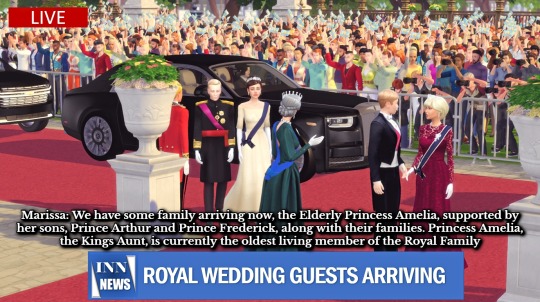
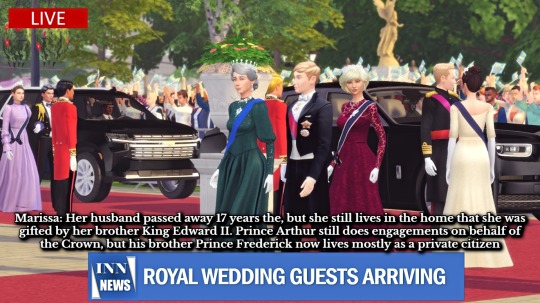





















Royal Wedding of Robert and Alexandra Part Two, Windenburg
Thank you to @armoricaroyalty @trentonsimblr and @officalroyalsofpierreland for sending your sims to the wedding! 😁
Previous| Beginning | Next
Transcript under the cut
Karen: Hello and welcome to INNs live coverage of the royal wedding between Prince Robert and Lady Alexandra Sinclair.
Today is the culmination of a proper royal love story. It all started at another royal wedding - between the Prince’s brother Crown Prince Charles and Lady Alexandra’s best friend Princess Victoria.
Over the past four years, they had managed to keep their relationship under the radar until the couple was spotted walking hand in hand through central Windenburg. Lady Alexandra was then invited to attend The Queens annual carol service at Lancaster Cathedral - a clear sign of approval from the Royal family.
They announced their engagement to much joy five months ago and since then, the countdown to the wedding of the year began, with announcements of wedding details followed closely by royal watchers.
We now go to our correspondent at Windenburg Cathedral, Marissa how is the atmosphere out there?
Marissa: Thank you Karen - the excitement out here is high, waiting for the wedding party to arrive. Guests have been arriving over the last 30 minutes or so, from politicians, friends of the couple, to organisations that Prince Robert is a patron of.
We have some family arriving now, the Elderly Princess Amelia, supported by her sons, Prince Arthur and Prince Frederick, along with their families. Princess Amelia, the Kings Aunt, is currently the oldest living member of the Royal Family.
Her husband passed away 17 years the, but she still lives in the home that she was gifted by her brother King Edward II. Prince Arthur still does engagements on behalf of the Crown, but his brother Prince Frederick now lives mostly as a private citizen.
Exiting a car now is the Duke and Duchess of Laughton
They have stopped to speak with Prince Frederick, and his wife Lady Frances Atherton. For those unfamiliar, the Duke and Prince Fredrick both went to school with the King, and the Duke is a member of the privy council, a group of the Kings closest advisors.
I have here with me a former co-worker of Lady Alexandra’s - Keeley, thank you for talking to us on this very special day.
Keeley: You are welcome Marissa
Marissa: What was Alexandra like as a coworker? Were you close?
Keeley: Oh absolutely! She was super fun to work with, and we had girls lunches all the time.
Marissa: You worked together when Robert and Alexandra first met yes?
Keeley: I remember when she first met him - totally gone for him, I mean - heart eyes all over. She was obsessed. I'm not surprised we all ended up here - only that it took so long!
Marissa: So there you have it - love from the very beginning!
Now we are starting to see some foreign arrivals to the Cathedral –
getting out of the car now are Their Royal Highnesses Prince Oliver and Princess Hortense, the Duke & Duchess of Rothsey. The Princess is looking beautiful in a red gown and traditional tartan while Prince Oliver is wearing a traditional tartan kilt
Here comes Their Royal Highnesses Princess Eleanor, and Prince Ryland, the Princess and Prince of Westburg, dressed in Trenton purple for the occasion.
Princess Eleanor is wearing the delicate Danielle Bandeau tiara, commonly worn at significant overseas events by both the Princess and her mother Queen Elizabeth.
Their Royal Highnesses Prince Jacques and Vivienne, Duke and Duchess of Laye have now arrived at the Cathedral representing Armorica.
The Duchess is a close friend of Princess Margaret and made a very public visit to Illyria during Fashion week, attending many shows and parties with the Princess. There was no confirmation if the Duchess’ young son or husband travelled with her during that trip.
--
Karen: Here with us in the studio is Royal correspondent Miles Hightower, who has covered the royal family for over thirty years - Welcome Miles
Miles: Thank you for having me
Karen: And welcome Nancy Fortuna, author of the best selling book “King George: A Life of Service”
Nancy: Great to be here!
Karen: Miles, you have seen many a royal wedding in your time covering the royals
Miles: I certainly have! I was outside the cathedral when His Majesty married then-Lady Elizabeth Lyons. Weddings are such a celebratory occasion and a great chance for the public to participate in such an important family moment too. While Prince Robert is not going to inherit, there has always been fascination with “the Spare” and their wife and children.
Nancy: King George’s reign has been all about continuing the House of Lancaster and making sure its stable for generations to come so I'm sure he is thrilled that another of his children is getting married.
Miles: His dual role as monarch and father cannot be understated. A father to the nation and to his own children who will undoubtedly follow in his footsteps in making their own families
Karen: Princess Margaret doesn’t seem in any hurry to settle down
Nancy: Sources say that the King is very supportive of the Princesses choices, letting her move into Kensington Palace and strike out on her own
Miles: Ah she's young - once she finds the right man, she will settle
#lancasterroyalstory#lancasterchapterthree#kinggeorge#the sims 4 royal#ts4 royalty#ts4 royal family#ts4 royals#the sims 4 royal family#ts4 story#the sims 4 royal simblr#the sims 4 screenshots#ts4 simblr#the sims 4 royal wedding#the sims 4 royalty#sims 4 royal#sims 4 royalty#royal simblr#robertandalexweddingts4
39 notes
·
View notes
Text



(Stéphane Bernard) Observe with what elegance most of the guests are wearing the republican cocarde! Among all the French symbols, the Emperor has chosen to honor Liberty, so dear to our Nation. What a magnificent way to celebrate our shared heritage. (Other journalist) Indeed, the empire has preserved many remnants, if I may say, of the French Revolution. (Stéphane Bernard) Emperor Napoleon III once said that the empire is "the reign of liberty, preserving the moral influence of the Revolution, and diminishing the fears it inspired." I believe that sums up Simpartism quite well.


(Stéphane Bernard) Look, the Emperor and Empress of Pierreland, also wearing la cocarde. (Other journalist) Always so radiant. It is said that today the roles have reversed, with Emperor David, once protected by Napoleon IV, now striving to watch over Napoleon V. (Stéphane Bernard) Absolutely, Their Imperial Majesties share a very strong relationship. In fact, when he was still the imperial prince, Napoleon V spent many hours coordinating the maritime alliance between our two countries.


(Stéphane Bernard) Queen Diana of Simdonia and her consort, who welcomed Emperor Napoleon V on his first ever state visit. They are followed by King Arthur of the United Kingdom of Prydain and Voltadermar.

⚜ Le Sacre de Napoléon V | N°3 | Francesim, Versailles, 27 Thermidor An 230
The guests arrive at the gala for the coronation of Emperor Napoleon V at Versailles. It was broadcast live on television by Stéphane Bernard, the famous journalist for the crowned heads in Francesim.
Beginning ▬ Previous ▬ Next
⚜ Guests at the coronation
TIM, Emperor David I and Empress Katalina of Pierreland (@officalroyalsofpierreland)
HRH, Prince Oliver, Duke of Rothsey (@officalroyalsofpierreland)
HIM, Queen Viviana II of the Ionian Union (@funkyllama)
TM, King Arnaut and Queen Lorraine of Uspana (@nexility-sims)
HM, Queen Anastasia of Carrington and HRH, Prince Hisirdoux, the Duke of Clois (@royalhouseofcarrington)
TRH, Crown Prince George, Duke of Everton and Crown Princess Anne, Duchess of Everton (@crownsofesha)
HRH, Margaret, the Princess Royal of Corrilea (@theroyalsofcorrilea)
HM, Queen Diana and HRH, Prince Gerhard of SimDonia (@bridgeportbritt)
HRH, Madame Royale Eleanor de Thornolie (@theroyalthornoliachronicles)
TM, King Giovanni and Queen Consort Cassandre (@royalhouseofcardsleyts4)
TIM, The High King and High Queen of the Presean Empire (@stthomaspalace)
TM, King George I and Queen Elizabeth of Illyria (@the-lancasters)
TRH, the Duke and Duchess of Marseille and Saint-Lyon (@sosa-royals)
HM, Rosalind II, Queen of the Armoricans (@armoricaroyalty)
HM, King Arthur of the United Kingdom of Prydain and Voltadelmar (@prydainroyals)
TRH, The Prince and Princess of Belen (@housekonig)
HIH, The Princess Imperial Eliana of Alexandria (@thealexandrianroyals)
TM, Queen Najwa and King Abeni of Oasis Springs (@hrh-the-royals)
TRH, Crown Princess Emeline and Crown Prince Cedric of Whitmore (@whitmoreroyals)
TM, King Oliver and Queen Charlotte of Cedoria and the Isle (@thebaillieroyals)
TM, King James II and Queen Alibhe of United Kingdoms of Great Briton and Ériu (@trhor)
Her Majesty Queen Irene and HRH Prince James (@albanyroyals)
⚜ Traduction française
(Stéphane Bernard) Observez avec quelle élégance la plupart des invités arborent la cocarde républicaine ! Parmi tous les symboles français, l'Empereur a souhaité mettre à l'honneur la Liberté, si chère à notre Nation. Quelle magnifique manière d'honorer notre héritage commun ! (Autre journaliste) Effectivement, l'empire a conservé de nombreux vestiges si j'ose dire de la Révolution française. (Stéphane Bernard) L'empereur Napoléon III disait que l'empire est "le règne de la liberté, sauvant l'influence morale de la Révolution, et en diminuant les craintes qu'elle inspirait". Je crois que ça résume bien le Simpartisme.
(Stéphane Bernard) L'empereur et l'impératrice de Pierreland, portant eux aussi la cocarde. (Autre journaliste) Toujours aussi rayonnants. On raconte aujourd'hui que les rôles s'inversent, que l'empereur David, autrefois protégé par Napoléon IV, s'efforce aujourd'hui de veiller sur Napoléon V. (Stéphane Bernard) Tout à fait, Leurs Majestés Impériales ont de très bonnes relations. D'ailleurs, lorsqu'il était encore prince impérial, Napoléon V a passé de nombreuses heures à coordonner l'alliance maritime entre nos deux pays.
(Stéphane Bernard) La reine Diana de Simdonia et son consort, qui ont accueilli l'empereur Napoléon V pour sa toute première visite d'Etat. Ils sont suivis du roi Arthur du Royaume-Uni de Prydain et Voltadermar.
#simparte#ts4#ts4 royal#royal simblr#sims 4 royal#sims 4 fr#sims 4#ts4 royalty#sims 4 royalty#sim : david#sim : katalina#le cabinet noir#episode iii#coronation napoleon v#ts4 coronation#sims 4 royal family#royal sims#ts4 royal family#ts4 royal simblr#ts4 royal legacy#versailles#event#sim : stephane bernard
41 notes
·
View notes
Text
Ages of English Queens at First Marriage
I have only included women whose birth dates and dates of marriage are known within at least 1-2 years, therefore, this is not a comprehensive list. For this reason, women such as Philippa of Hainault and Anne Boleyn have been omitted.
This list is composed of Queens of England when it was a sovereign state, prior to the Acts of Union in 1707. Using the youngest possible age for each woman, the average age at first marriage was 17.
Eadgifu (Edgiva/Ediva) of Kent, third and final wife of Edward the Elder: age 17 when she married in 919 CE
Ælfthryth (Alfrida/Elfrida), second wife of Edgar the Peaceful: age 19/20 when she married in 964/965 CE
Emma of Normandy, second wife of Æthelred the Unready: age 18 when she married in 1002 CE
Ælfgifu of Northampton, first wife of Cnut the Great: age 23/24 when she married in 1013/1014 CE
Edith of Wessex, wife of Edward the Confessor: age 20 when she married in 1045 CE
Matilda of Flanders, wife of William the Conqueror: age 20/21 when she married in 1031/1032 CE
Matilda of Scotland, first wife of Henry I: age 20 when she married in 1100 CE
Adeliza of Louvain, second wife of Henry I: age 18 when she married in 1121 CE
Matilda of Boulogne, wife of Stephen: age 20 when she married in 1125 CE
Empress Matilda, wife of Henry V, HRE, and later Geoffrey V of Anjou: age 12 when she married Henry in 1114 CE
Eleanor of Aquitaine, first wife of Louis VII of France and later Henry II of England: age 15 when she married Louis in 1137 CE
Isabella of Gloucester, first wife of John Lackland: age 15/16 when she married John in 1189 CE
Isabella of Angoulême, second wife of John Lackland: between the ages of 12-14 when she married John in 1200 CE
Eleanor of Provence, wife of Henry III: age 13 when she married Henry in 1236 CE
Eleanor of Castile, first wife of Edward I: age 13 when she married Edward in 1254 CE
Margaret of France, second wife of Edward I: age 20 when she married Edward in 1299 CE
Isabella of France, wife of Edward II: age 13 when she married Edward in 1308 CE
Anne of Bohemia, first wife of Richard II: age 16 when she married Richard in 1382 CE
Isabella of Valois, second wife of Richard II: age 6 when she married Richard in 1396 CE
Joanna of Navarre, wife of John IV of Brittany, second wife of Henry IV: age 18 when she married John in 1386 CE
Catherine of Valois, wife of Henry V: age 19 when she married Henry in 1420 CE
Margaret of Anjou, wife of Henry VI: age 15 when she married Henry in 1445 CE
Elizabeth Woodville, wife of Sir John Grey and later Edward IV: age 15 when she married John in 1452 CE
Anne Neville, wife of Edward of Lancaster and later Richard III: age 14 when she married Edward in 1470 CE
Elizabeth of York, wife of Henry VII: age 20 when she married Henry in 1486 CE
Catherine of Aragon, wife of Arthur Tudor and later Henry VIII: age 15 when she married Arthur in 1501 CE
Jane Seymour, third wife of Henry VIII: age 24 when she married Henry in 1536 CE
Anne of Cleves, fourth wife of Henry VIII: age 25 when she married Henry in 1540 CE
Catherine Howard, fifth wife of Henry VIII: age 17 when she married Henry in 1540 CE
Jane Grey, wife of Guildford Dudley: age 16/17 when she married Guildford in 1553 CE
Mary I, wife of Philip II of Spain: age 38 when she married Philip in 1554 CE
Anne of Denmark, wife of James VI & I: age 15 when she married James in 1589 CE
Henrietta Maria of France, wife of Charles I: age 16 when she married Charles in 1625 CE
Catherine of Braganza, wife of Charles II: age 24 when she married Charles in 1662 CE
Anne Hyde, first wife of James II & VII: age 23 when she married James in 1660 CE
Mary of Modena, second wife of James II & VII: age 15 when she married James in 1673 CE
Mary II of England, wife of William III: age 15 when she married William in 1677 CE
113 notes
·
View notes
Text

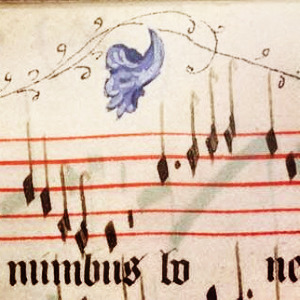
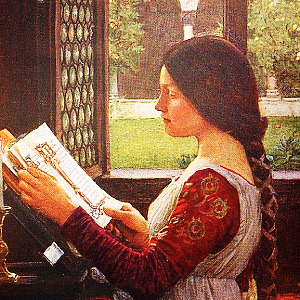

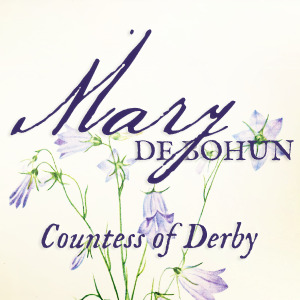
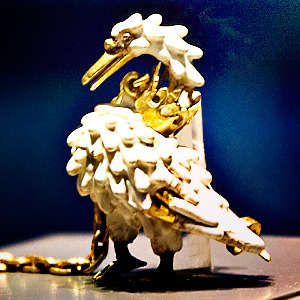


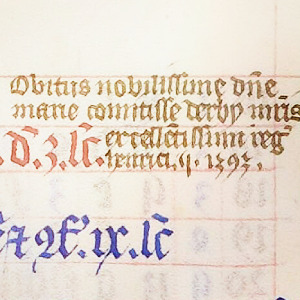
Mary de Bohun, Countess of Derby
Mary de Bohun was probably born around 22 December 1370 to Humphrey de Bohun and Joan Fitzalan, Earl and Countess of Hereford. As her father had no son, she and her elder sister, Eleanor, became the heiresses of his wealthy earldom. Eleanor married Thomas of Woodstock, the youngest son of Edward III, and according to Froissart, Woodstock intended Mary to enter a nunnery so he would inherit the entire earldom. This was not to be. In late 1380 or early 1381, Mary married John of Gaunt's son and heir, Henry Bolingbroke, the future Henry IV. The marriage appears to have happy as they shared similar interests and often spent time together. The story that Mary gave birth to a short-lived son in 1382, when she would have been only 11, is now believed to be a myth brought into being by a mistranslated text referring to her sister giving birth to a son. Mary's first child was the future Henry V, born 16 September 1386. Four more children soon followed: Thomas, Duke of Clarence (29 September 1387), John, Duke of Bedford (20 June 1389), Humphrey, Duke of Gloucester (3 October 1390) and Blanche, Electress Palatine (25 February 1392). Mary died either giving birth to her sixth and final child, Philippa, Queen of Norway, Denmark and Sweden, or from complications afterwards, on 1 July 1394, when she was only 23 years old. Mary was buried on 6 July 1394 in the Church of the Annunciation of Our Lady of the Newarke in Leicester. The church and her tomb was destroyed in the Reformation.
A little of her personality can be reconstructed. She was interested in music, playing the harp or cithara, and she bought a ruler to line parchment for musical notation, suggesting she may have also composed music.Such an interest was shared by both her husband and eldest son, one or both of whom were the 'Roy Henry' who composed two mass movements. She maintained a close contacts with other noblewomen, not only her mother and sister, but Constanza of Castile, Katherine Swynford and Margaret Bagot, suggesting that she may well have been more politically aware and involved than what is generally believed. She may have also continued the de Bohun of patronising manuscript illuminators. A number of illuminated manuscripts believed to belong to her or her sister are some of the most celebrated late medieval English manuscripts.
Mary never became Duchess of Lancaster, let alone Queen of England, but it was her family's badge of the swan that became associated with the Lancastrian kings, most famously borne by her eldest son, Henry V. One of Henry V's first acts as king was to order a copper effigy for her tomb, while in the charter of his Syon foundation, he required that the soul of "Mary … our most dear mother", among others, be prayed for in a daily divine service. Her third son, John, recorded her anniversary into his personal breviary, while her daughters may have each carried manuscripts belonging to her with them when they left England to be married. Despite the brevity of her life, Mary was remembered long after her death.
Sources: Paris, Bibliothèque Nationale, MS Lat. 17294, Chris Given-Wilson, Henry IV (Yale University Press 2017), Ian Mortimer, The Fears of Henry IV (Vintage 2008), John Matusiak, Henry V (Routledge 2012), Calendar of the Patent Rolls: Henry IV. Vol. I. A. D. 1399-1401, Calendar of Close Rolls 1381-1385, Rebecca Holdorph, 'My Well-Beloved Companion': Men, Women, Marriage and Power in the Earldom and Duchy of Lancaster, 1265-1399, University of Southampton, PhD Thesis, Marina Vidas, The Cophenhagen Bohun Hours: Women, Representation and Reception in Fourteenth Century England (Museum Tusculanum Press 2019)
94 notes
·
View notes
Photo
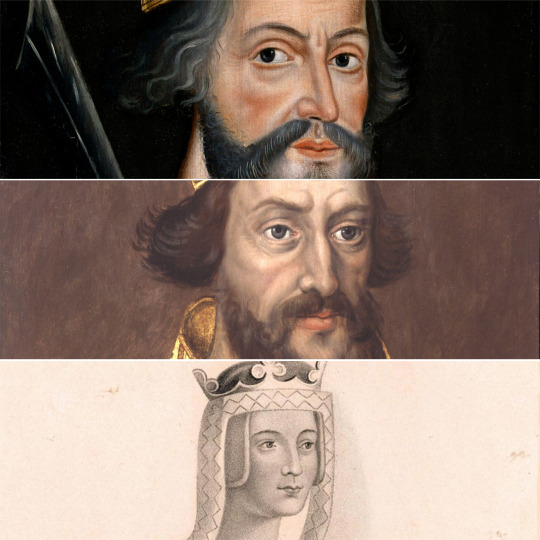
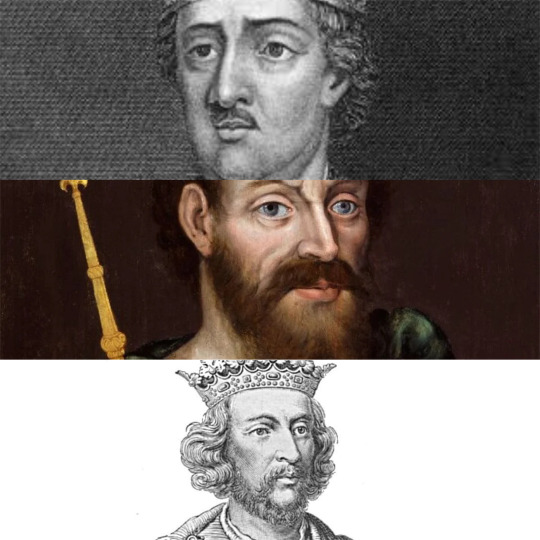

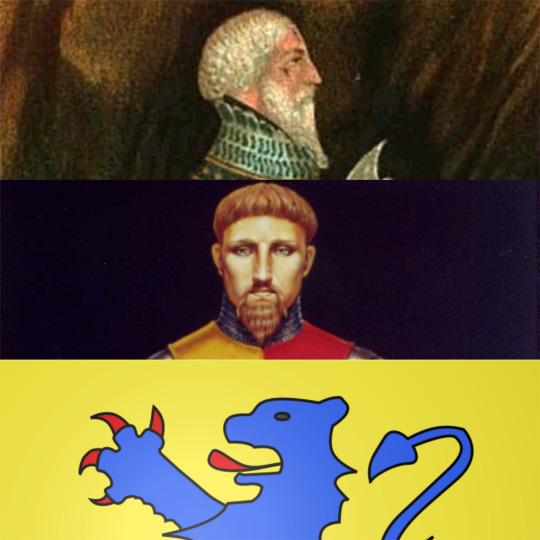


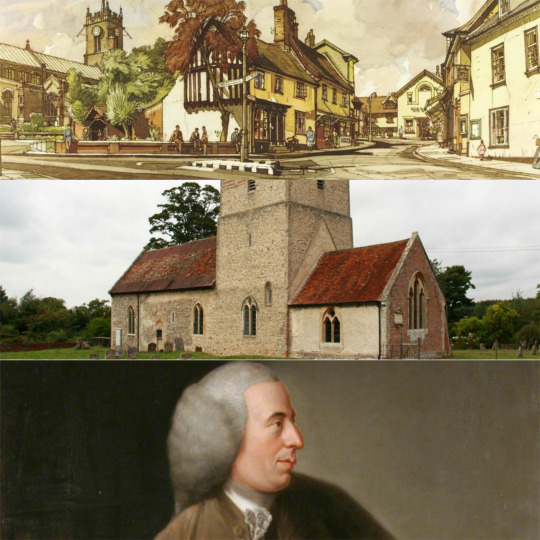
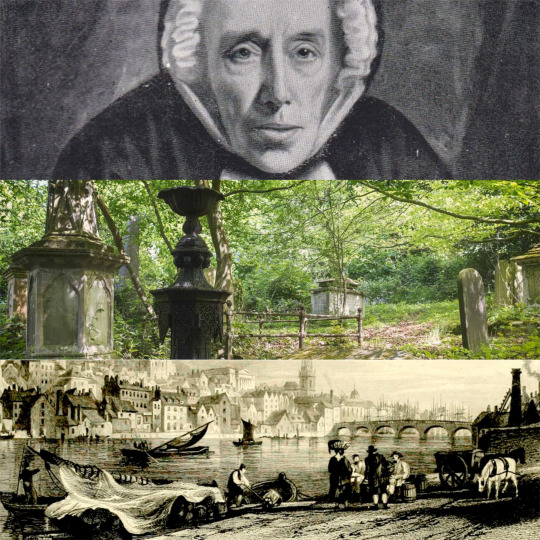
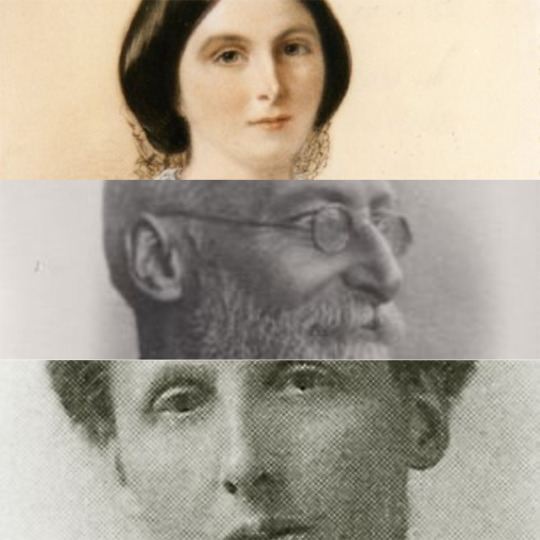

William, The Conqueror to Catherine, The Princess of Wales ⤜ The Princess of Wales is William I's 27th Great-Granddaughter via her paternal grandfather’s line.
William the Conqueror (m. Matilda of Flanders)
Henry I, King of England (m. Matilda of Scotland)
Empress Matilda (m. Geoffrey V, Count of Anjou)
Henry II, King of England (m. Eleanor of Aquitaine)
John I, King of England (m. Isabella of Angoulême)
Henry III, King of England (m. Eleanor of Provence)
Edmund, Earl of Lancaster (m. Blanche of Artois)
Henry, 3rd Earl of Leicester and Lancaster (m. Matilda de Chaworth)
Mary of Lancaster, Baroness Percy (m. Henry de Percy, 3rd Lord Percy) - Coat of Arms
Sir Henry Percy, 1st Earl of Northumberland (m. Margaret de Neville)
Sir Henry ‘Hotspur’ Percy (m. Elizabeth Mortimer)
Sir Henry Percy, 2nd Earl of Northumberland (m. Lady Eleanor Neville) - Coat of Arms
Sir Henry Percy, 3rd Earl of Northumberland (m. Eleanor, Baroness Poynings) - Coat of Arms
Lady Margaret Percy (m. Sir William Gascoigne)
Agnes Gascoigne (m. Sir Thomas Fairfax) - Gawthorpe Hall, family seat.
William Fairfax (m. Anne Baker) - Gilling Castle, family seat.
John Fairfax (m. Mary Birch) Master of the Great Hospital at Norwich, Norfolk
Rev. Benjamin Fairfax (m. Sarah Galliard), Preacher at Rumburgh, Suffolk.
Benjamin Fairfax (m. Bridget Stringer) died in Halesworth, Suffolk.
Sarah Fairfax (m. Rev. John Meadows) died in Ousedon, Suffolk.
Philip Meadows (m. Margaret Hall)
Sarah Meadows (m. Dr. David Martineau)
Thomas Martineau (m. Elizabeth Rankin) buried at Rosary Cemetery, Norwich.
Elizabeth Martineau (m. Dr. Thomas Michael Greenhow) died in Newcastle upon Tyne, Northumberland.
Frances Elizabeth Greenhow (m. Francis Lupton)
Francis Martineau Lupton (m. Harriet Albina Davis)
Olive Christina Lupton (m. Richard Noel Middleton)
Peter Francis Middleton (m. Valerie Glassborow)
Michael Francis Middleton (m. Carole Elizabeth Goldsmith)
The Princess of Wales m. The Prince of Wales
#this took wayyy to long#princess of wales#william the conqueror#history#ancestry#pictures#people#brf#british royal family#empress matilda#henry ii#henry i#john i#king of england#henry iii#hotspur#KTD
104 notes
·
View notes
Text












El simbolismo de la Naturaleza: Las rosas
En todas las culturas las flores han tenido un papel muy relevante en cuanto a símbolos se refiere. Asociadas a valores, virtudes y a la comunicación de significados profundos, la rosa es una flor con especial presencia en el imaginario colectivo.
Los significados de la rosa van desde la juventud, la pureza, la perfección, el amor terrenal y el renacimiento, hasta la pasión, el cortejo, el matrimonio y la muerte. El significado que se le asigne está determinado por su color.
Las rosas rojas y rosadas han sido utilizadas en pócimas de amor, en perfumes, cosméticos, tés y remedios medicinales. Aparecen en los retratos femeninos acompañando a las protagonistas en jarrones o a manera de adornos corporales. Significan mensajes de amor y belleza. En Occidente se suspendía una rosa en el techo para que oscilara en el centro de una mesa. Esto significaba que todos los secretos que se confesaran en la habitación debían ser guardados. En el arte de la época victoriana su representación es frecuente y está asociada a la discreción. En el imaginario católico, las rosas se relacionan con el rosario —su nombre deviene de ellas—, pues son símbolo del amor maternal de la Virgen María. También, el color rojo simboliza la sangre de Cristo.
Las rosas blancas son las flores de la luna; simbolizan pureza, virginidad, encanto y discreción. Numerosas santas como Santa Rosa de Lima, aparecen con flores blancas en alusión a su pureza y castidad. La rosa blanca fue el emblema de la casa inglesa de York, que se enfrentó a los Lancaster en la Guerra de las Dos Rosas. Por su parte, las rosas amarillas se asocian con los celos y la infidelidad. En 1759, por orden papal, se creó la Orden de la Rosa Dorada, a la que ingresan soberanas católicas.
www.tarotdeana.tumblr.com
Imágenes:
"Still life, Roses", por Joseph Rodefer.
"Roses", por Rudolfs Perle.
"Helen of Troy", por Evelyn de Morgan.
"Queen Eleanor and the Fair Rosamund", por Evelyn de Morgan.
"Roses and peonies", por Vincent van Gogh.
"The King and his Court", por Edward Burne-Jones.
"Madonna and Child", por un seguidor de Fra Filippo Lippi.
"Amo Te Ama Me", por Sir Lawrence Alma-Tadema.
"Unfinished portrait of Her Majesty Queen Elizabeth The Queen Mother", por Augustus Edwin John.
"Catherine Howard, Lady d'Aubigny", por Anton van Dyck.
"María Antonieta, Reina de Francia", por Marie-Louise-Élisabeth Vigée-Lebrun.
"Santa Rosa de Lima con Niño Jesús", por Escuela Anónima del Cusco.
Lee mitos japoneses aquí.
Lee mitos coreanos aquí.
Lee mitos griegos aquí.
#tarot#cartomancia#tarot reading#ocultismo#ocultista#tarot cards#witchcraft#brujería#artes ocultas#cosas de brujas#roses#rosas#flores#alma tadema#evelyn de morgan#simbolismo#symbolism#símbolos#símbología#marie louise elisabeth vigee lebrun#arte#anton van dyck#van gogh#vincent van gogh
3 notes
·
View notes
Text

Burt Lancaster in The Swimmer (Frank Perry, 1968)
Cast: Burt Lancaster, Janet Langford, Janice Rule, Joan Rivers, Tony Bickley, Marge Champion, Kim Hunter, Bill Fiore, Rose Gregorio, Charles Drake, House Jameson, Nancy Cushman, Bernie Hamilton. Screenplay: Eleanor Perry, based on a short story by John Cheever. Cinematography: David L. Quaid. Art direction: Peter Dohanos. Film editing: Sidney Katz, Carl Lerner, Pat Somerset. Music: Marvin Hamlisch.
The Swimmer evokes that common anxiety dream in which you're naked or in your underwear in a familiar place like work or school. The people around you don't seem to notice, but you suspect that they're secretly laughing at you. The dream is produced, of course, by something that you don't want other people to know about you. Ned Merrill (Burt Lancaster) isn't naked, but he's exposed, wearing swim trunks and barefoot, when we first see him walking through the woods. He comes upon a group of his neighbors gathered around their swimming pool. They greet him heartily, commenting on how long it's been since they got together, serving drinks and making small talk. Ned suddenly has an idea: All of his neighbors have pools. Why couldn't he swim his way home, moving from pool to pool until he reaches his destination? The group cheers him on. Ned is an athletic middle-aged man (Lancaster was in his mid-50s when the film was made, but looked perhaps ten years younger), and the day is sunny and warm. But as he continues his pool-hopping, he injures himself slightly and the day gets darker and chillier, and so does the reception of the pool-owners he encounters. We begin to discover that Ned is in financial trouble and that the marriage he initially portrayed as happy has fallen apart. The John Cheever story on which the film is based is often read as a fable about suburban hypocrisy and male anxiety, and the movie supports those and other interpretations. Lancaster is perfect casting, not only because of his physical fitness but also because of the signs of aging that the camera inevitably reveals -- camera angles, for example, sometimes show the thinning of the hair at the crown of his head. But the film version lacks the Everyman quality of Cheever's story, missing some of the shock of recognition by the reader, an inevitability in its translation to a visual medium. It also ran into some trouble with producer Sam Spiegel, who had many scenes recast and reshot, firing director Frank Perry and replacing him with Sydney Pollack. It was not a success at the box office, being a little too oblique for audiences and some critics, but it has gained stature with time.
5 notes
·
View notes
Text


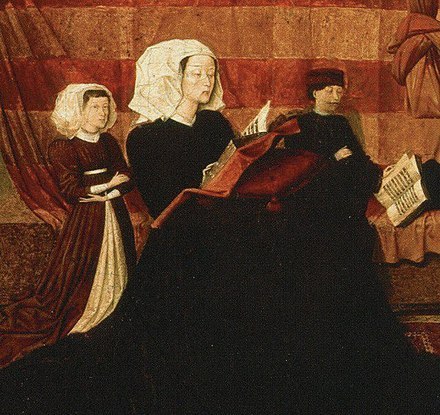


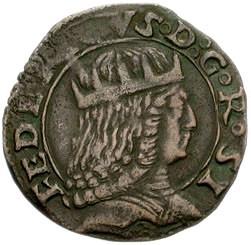


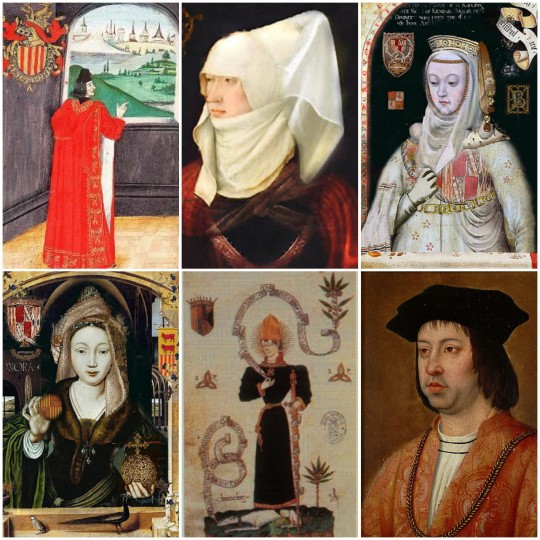
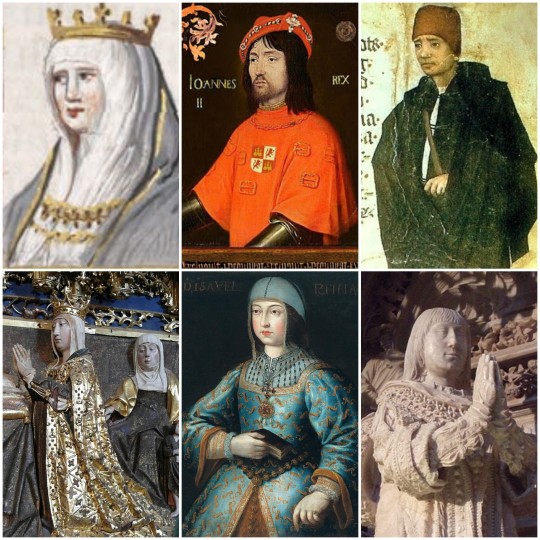
The Bastard Kings and their families
This is series of posts are complementary to this historical parallels post from the JON SNOW FORTNIGHT EVENT, and it's purpouse to discover the lives of medieval bastard kings, and the following posts are meant to collect portraits of those kings and their close relatives.
In many cases it's difficult to find contemporary art of their period, so some of the portrayals are subsequent.
1) Ferdinand I of Naples ( 1424 – 1494), son of Alfonso V of Aragon and Giraldona Carlino
2) Alfonso V of Aragon (1396 – 1458), son of Ferdinand I of Aragon and his wife Leonor de Albuquerque
3) Isabella of Taranto or Clermont (c. 1424 – 1465), daughter of Tristan of Clermont and Catherine of Taranto
4) Alfonso II of Naples ( 1448 – 1495), son of Ferdinand I of Naples and his wife Isabella of Taranto
5) Eleanor of Naples (1450 – 1493) & Beatrice of Naples (1457 – 1508), daughters of Ferdinand I of Naples and his wife Isabella of Taranto
6) Frederick I of Naples (1452 – 1504), son of Ferdinand I of Naples and his wife Isabella of Taranto
7) Ferdinand of Aragon and Guardato (before 1494–1542), son of Ferdinand I of Naples and Diana Guardato
8) Eleanor of Aragon (1402 – 1445), daughter of Ferdinand I of Aragon and Leonor de Albuquerque
9) I. John II of Aragon & Navarre (1398- 1479), son of Ferdinand I of Aragon and his wife Leonor de Albuquerque
II. Blanche I of Navarre (1385-1441), daughter of Charles III of Navarre and his wife Eleanor of Castile
III. Blanche II of Navarre (1424 – 1464), daughter of John II of Aragon and his wife Blanche I of Navarre
IV. Eleanor I of Navarre (1426 - 1479), daughter of John II of Aragon and his wife Blanche I of Navarre
V. Charles of Viana/ Charles IV of Navarre (1421- 1461), son of John II of Aragon and his wife Blanche I of Navarre
VI. Ferdinand II of Aragon & V of Castile (1452-1516), son of John II of Aragon and his wife Juana Enríquez
10)
I. Mary of Aragon ( 1403- 1445), daughter of Ferdinand I of Aragon and his wife Leonor de Albuquerque
II. John II of Castile (1405- 1454), son of Henry III of Castile and his wife Catherine of Lancaster
III. Henry IV of Castile (1425-1474), son of John II of Castile and his wife Mary of Aragon
IV. Isabella of Portugal (1428 - 1496), daughter of John of Portugal and Isabella of Barcelos
V. Isabella I of Castile (1451-1504), daughter of John II of Castile and his wife Isabella of Portugal
VI. Alfonso of Castile (1453-1468), son of John II of Castile and his wife Isabella of Portugal
#jonsnowfortnightevent2023#asoiaf#a song of ice and fire#canonjonsnow#day 10#echoes of the past#historical parallels#medieval bastard kings#bastard kings and their families#ferdinand i of naples#alfonso v of aragon#isabella of taranto#alfonso ii of naples#eleanor of naples#beatrice of naples#frederick i of naples#ferdinand of aragon and guardato#eleanor of aragon#john ii of aragon#blanche i of navarre#blanche ii of navarre#eleanor i of navarre#charles of viana#ferdinand ii of aragon#mary of aragon#john ii of castile#henry iv of castile#isabella of portugal#isabella i of castile#alfonso of castile
10 notes
·
View notes
Note
Top 5 favourite relationships (gen, romantic whatever) in the Histories fandom
ooooh 👀
big fan of what hal and his siblings have going on <3 there's so much fun to be had there <3
an offshoot of that: Humphrey and Henry 6. There's so much to unpack there
Harry 6 and Margaret...
...but also Margaret and Eleanor :)
And also Edward of Lancaster and his parents. There's so much open space to explore there and it's all so sad ;_;
3 notes
·
View notes